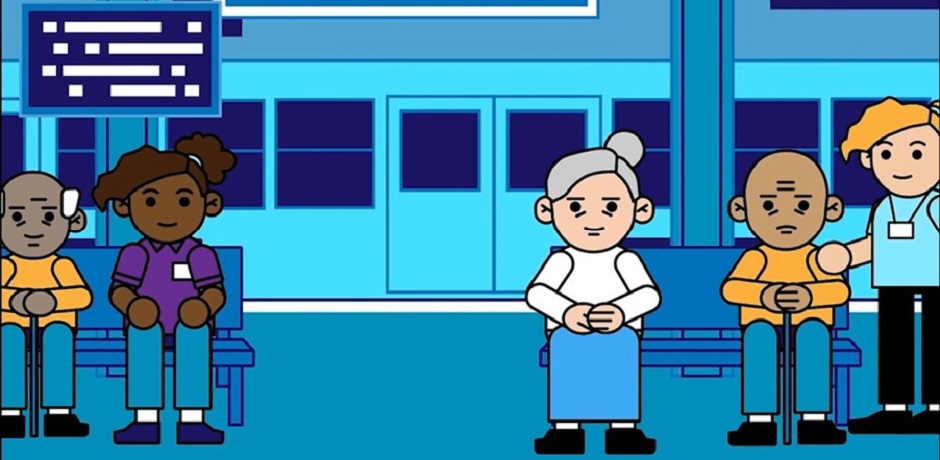)
Data-Driven Decision-Making in Homelessness Services
There is a lack of robust information on how people who are homeless value services and support. Commissioners, organisers, and service providers need this information to plan, organise, and improve services, reach more people in need, and prevent those who received help from returning to rough sleeping. Very little work has been done on how to meet the needs and preferences of people experiencing homelessness from available resources. Michela Tinelli, (Care Policy and Evaluation Centre, LSE), here describes how her NIHR SSCR Leadership Fellowship is supporting her to apply the choice modelling approach to understand the service user preferences of people experiencing homelessness.
Choice Modelling and Discrete Choice Experiments Data
Choice modelling, a flexible tool originating from market research, is commonly used in health services but less frequently in social care. It enables the measurement of preferences between alternative scenarios or types of service provision. In my research, I use discrete choice experiment (DCE) survey methods to collect information.
Analysing DCE data unveils interesting insights:
- What aspects of a service matter most to people, whether location of care and who provide care are important whereas how many visits of the carer per week is not prioritised.
- Trade-offs between characteristics, such as how long they’re willing to wait for receiving care at home (compared with in temporary accommodation) or, with consideration of cost attributes, how much people are willing to pay extra for receiving care at home (compared with in temporary accommodation).
- Willingness to pay for a policy change where multiple characteristics are changed, like how much people are willing to pay extra for Service A (where the main carer is a nurse, care is provided at home with biweekly visits) compared with Service B (where the main carer is a housing officer, care is provided in a temporary accommodation with one visit per week).
- Uptake of different care models and use the DCE data to predict how may are likely to choose service A (85%) over Service B (15%).
In simple terms, choice modelling and the analysis of DCEs data help understand what people want. This way, those in charge of service commissioning and delivery can make services better, meet specific needs, and ensure everyone gets the right help. Read more about the approach in this paper: ‘Applying discrete social experiments in social care research’ [PDF, 413KB]
Why use insights from the analysis of DCE data?
The preference data can be of use for different purposes.
- Policy Implications: By determining which aspects are highly valued in the decision-making process, DCE analysis offers practical guidance for policy development. It informs policymakers about where to focus their efforts and resources to align with the preferences of individuals and caregivers.
- Service Design and Improvement: The analysis of DCE data can be used to optimize the design of OOHC (Out of Hospital Care) services. It helps service providers understand what attributes and features are essential to delivering effective care. This information can lead to service improvements such as enhancing the quality-of-care settings, the location of care and tailoring support services to better meet the needs of those in care.
- Resource Allocation: DCE analysis can inform resource allocation decisions, helping to direct funding and support to aspects that matter most to those in OOHC. This ensures that resources are allocated efficiently and effectively.
- Supporting Informed Decision-Making: The analysis results empower individuals and decision-makers with information that supports informed choices. It allows them to make decisions that align with the attributes most valued by those in need of care.
Applying DCEs to homelessness service delivery
With my NIHR SSCR fellowship, I aim to expand the application of choice modelling and the analysis of DCEs data, focussing on supporting their impact in social care homelessness. As part of a larger evaluation of the Department of Health and Social Care-funded National Out of Hospital Care Models programme for people who are homeless I am using the preference data collected to capture service users’ preferences for different types of specialist hospital discharge schemes for people who are homeless. Read more about my work applying DCE’s to homelessness here.
As discussed in my webinar for KCL Homeless Webinar series (2023), DCE data visualisations present stated preferences data alongside other important information about service delivery costs and economic outcomes, patient follow and staff workload, health and housing outcomes, people sociodemographic and experience of care.
These integrated management dashboards, created by my team, can support national decision-making for the health and wellbeing of the population. In alignment with NHS England, the future automatisation of the dashboards aims to facilitate rapid improvements in data quality and coverage, embedding real-time data into day-to-day operational practices at the local system, regional, and national levels. They also help service providers make a strong case for future funding to local commissioners.
The lack of robust information on how homeless individuals value services highlights the importance of this work for service planners, commissioners and providers to plan, organize, and improve services effectively. Through the analysis of DCEs data, we gain valuable insights into service user preferences, trade-offs between characteristics, and willingness to pay for specific changes in care models.
Looking ahead
Additional events in 2024 will provide stakeholders, both local and national, the opportunity to explore the capabilities of integrated management dashboards, including DCE data visualisation. Whether you are a service manager or local commissioner (ICB, local authority, NHS trust, etc.), or a national stakeholder from a government department or an arm’s length body (NHSE, etc.), and you wish to know more about the dashboards and understand their applications in policy and practice, or would just like to know more about my work, please contact me.
Read NIHR Social Care Speciality posts here →




